By Penny Pawl, UC Master Gardener of Napa County
The tomato hornworm that so many gardeners detest has a beautiful future if we let it be. After a winter spent underground and when it is done with metamorphosis, it will become one of the loveliest and largest of the moth species.
We never get to see this moth because it only flies after dark. It is known as the sphinx moth or hummingbird moth. Some of them fly in a manner similar to the hummingbird.
During metamorphosis, a caterpillar transforms into a moth. The caterpillar's internal parts liquefy, reform and a moth is born. The same happens to butterflies and it is one of miracles of nature.
I found three of these giant worms the other day munching happily on one of my tomato plants. They blend in very well with the plant, and they are as big as my finger.
I gently pulled them off and inspected their grinding mouth parts. Then I put them under a large overturned bowl with some tomato leaves and the tomato they had been chewing on. The bow is resting on the garden soil.
Most people get upset when they see hornworms on their tomato plants. I get excited. I hate losing my precious tomatoes to them, but by putting them in a container, I give them a chance to complete their life cycle.
Many people agree with me. We like hornworms because they assist with Integrated Pest Management, a way of gardening and farming that relies on the good bugs to manage the bad bugs without the use of pesticides.
Hornworms eat your tomatoes, but in turn, the beneficial braconid wasp lays its eggs in many of the caterpillars. These tiny wasps develop within the caterpillar skin and eventually will kill their host. They emerge from the caterpillar looking rather like rice hulls on the back of the caterpillar.
This same process happens in other butterflies and moth larva and helps with pest management. Anise Swallowtail caterpillars, which feed on plants in the parsley and fennel family, also have parasitic wasps lay eggs in their eggs.
When the caterpillar completes its life cycle and transforms into a cocoon, it will drill into the soil to spend the next several months. I watched one do this and it was gone so quickly I was amazed. The following summer, when the weather warms, they will hatch and begin to fly around looking for places to lay their eggs. Tomato plants are a favorite host, but they like any plant in the nightshade family, including peppers, eggplants and potatoes
I have read that marigolds, basil, borage and mint will repel tomato hornworms if planted alongside the tomatoes. Their strong odors seem to repel the moth.
The hornworm begins life as a small egg laid on the underside of the leaf. The larva hatches and grows quickly, and as it grows it eats more and more of the host plant. After three to four weeks, it is ready to take that dive into the soil.
I raised two hornworm larvae in the house in a container a few years ago. The hornworms spent the winter in my refrigerator in a small jar with soil. When summer arrived, I moved them to the garden, but I fear the experiment was a failure. The three giants I just collected will be on their own when they decide to go into the next part of their life cycle.
UC IPM has this Pest Note on Tomato Hornworms:
http://ipm.ucanr.edu/PMG/GARDEN/VEGES/PESTS/hornworm.html
The UC Master Gardeners of Napa County are volunteers who provide University of California research-based information on home gardening. To find out more about home gardening, upcoming events or to submit gardening questions, visit the Master Gardener website (napamg.ucanr.edu). Our office is temporarily closed to walk-in questions, but we are answering questions remotely and by phone or email. Submit your gardening questions through our website, by email mastergardeners@countyofnapa.org or leave a phone message at 707-253-4143. Master Gardeners will get back to you within a few days.
Attached Images:
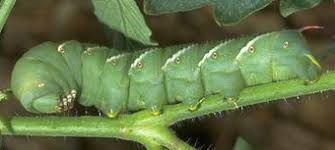
Tomato hornworm--the horns are on the rear end. (UC ANR)
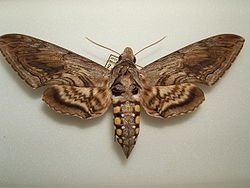
Sphinx moth (Master Gardener Assn of San Diego)
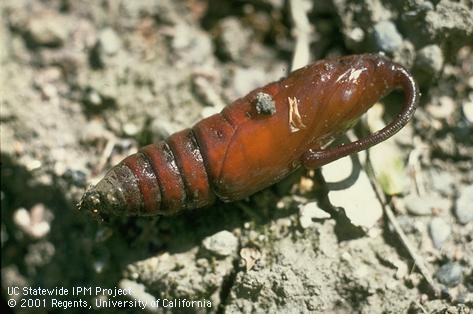
Tomato hornworm pupa.cocoon (UC IPM)

Hard to see hornworm (Extension Master Gardener Volunteers of Durham County)
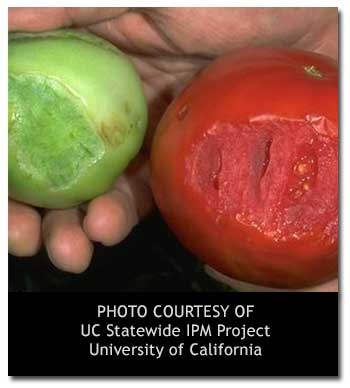
Tomato hornworm damage (UC IPM)
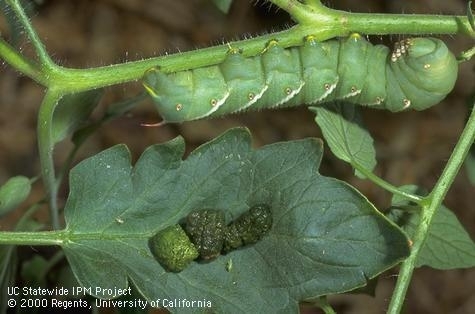
Hornworm with frass--how you can tell they've been eating your tomatoes; this is on leaves below the caterpillar (UC IPM)
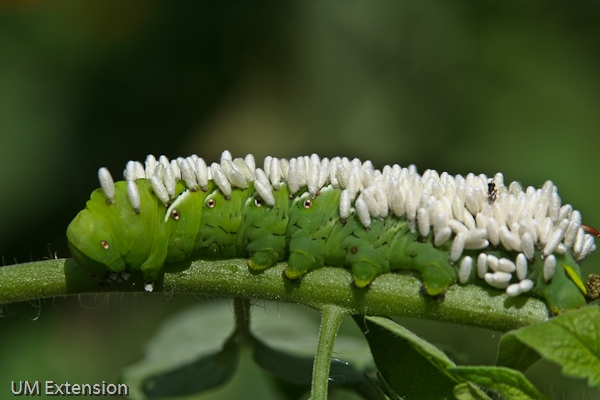
Hornworm with braconid wasp larvae (Univ of Maryland Extension)

Anise swallowtail--caterpillars not having been host to parasitic wasps become this pretty garden visitor (Allan Jones, UC ANR)
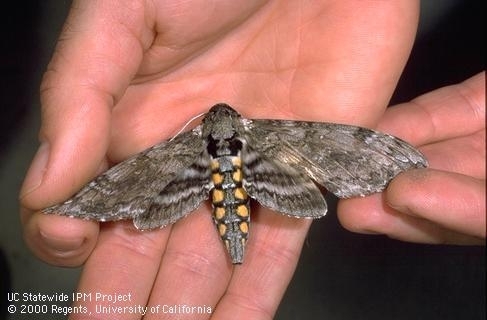
Sphinx moth ..... (UC IPM)

.... starts out like this tomato hornworm egg (Extension Master Gardener Volunteers of Durham County)